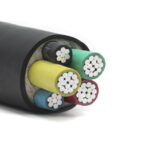Single-core Parallel Type and Multi-core Twisted Type Cable
The advent of power cables has greatly improved the safety of power generation, transmission, transformation, supply, distribution, and use of electricity. Single-core power cables appeared first. As there are more and more occasions for three-phase four-wire power supply, three-phase five-wire power supply and multi-loop power supply in actual use, the requirements for occupied space and … Read more

